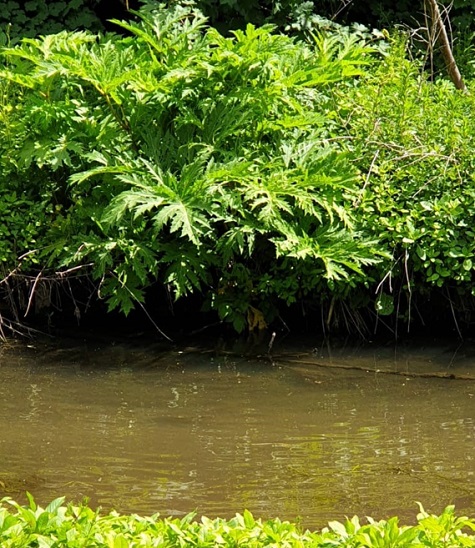At last, we are beginning to see the first steps of a comeback from this Covid-19 pandemic. Last Wednesday lockdown eased for the first time, with the government announcing that people could extend their activities as long as they stay alert and ensure they social distance themselves from other people they meet.
The government stated that those who could not work from home should contact their employers to start arranging a return to work strategy. But emphasized that they should only do this this if safe to do so.

Golfers returning to Olton Golf Club
As for sport we have seen the opening of golf clubs. People are also allowed to play tennis and basketball and bowls clubs will soon be allowed to open under certain restrictions.
Having spoken to a number of greenkeepers they are pleased to see some sort of return to normality and have spoken of their members’ delight on getting back out on the golf course. Many clubs are still working with a skeleton staffing regime and time will tell when the clubs can return properly.
Mark Smith told me he and his staff at Olton GC were pleased to see the members back playing golf on a pairs only basis, with a member of staff controlling start times of ten minutes between players.
Reaction from the members was very positive, with many praising the greenkeeping staff for keeping the course playable.
However, these new regimes from the UK government are only applicable to those in England at present. Wales, Scotland, and NI are still operating under the previous lockdown rules and conditions.
There are still discussions going on regarding the opening up of football and cricket and other sports.
Football is still up in the air. As The Guardain reported, “The Premier League is facing the possibility of having to delay its Project Restart after a pair of crucial meetings with players and managers provoked a series of robust exchanges and diverging views.
“A planned resumption of play on 12 June is now looking less likely, and kick-off a week later is now a possibility after issues over protocols for a safe return to play and concerns over the need for more training came to the fore.”
The BBC also report that League Two's season has been brought to an early conclusion following discussions between clubs and the English Football League. The EFL said clubs "unanimously indicated" they wished to end the season via a "framework" that included tables being decided on points per game and the play-offs remaining as planned. Any move still needs to be ratified by the EFL and Football Association.
But League One sides face further talks after failing to come to an agreement.
As for Rugby, a report by the BBC stated that Premiership Rugby is auditing its clubs' grounds to look for suitable venues to host rugby union's restart. Following government guidance, rugby's governing bodies are continuing to plan for the sport's safe return.

Leicester Tigers
With nine rounds of the season left, the preference remains to stage whole rounds of games at one venue for safety and logistical reasons.
A return date in early July remains the target, although the BBC has learned that the weekend of 27 June has also been mooted.
Some Premiership clubs are set to begin a phased return to training next week, with Harlequins scrum-half Danny Care telling the Rugby Union Weekly podcast that the players are "desperate" to get back playing if safe to do so, and that "rugby needs to come back" given the perilous financial predicament many clubs are facing.
No doubt many of our parks and beaches will see an influx of visitors now lockdown restrictions have been lifted. It will be interesting to see how we cope and when full staffing levels return to allow local authorities to ensure these parks and beaches can be maintained and managed.

Cannon Hill Park, Birmingham
This week I was also invited to attend a World Urban Parks webinar which was hosted by Scott Martin from the Institute for Parks and Public Land at Indiana University with the aim of introducing The Green Flag Award to members of the World Urban Parks Association. The presentation was delivered by Carl McClean International Development Manager for Green Flag who is based in England.
Carl Began his presentation talking about the history of the Green Flag awards which began in 1996 and talked about the many benefits that can be gained from achieving the award.
Green Flag presents over 2000 awards worldwide every year in fifteen countries and is run and managed by the Keep Britain Tidy Charity

Green Flag Awards
As a Green Flag judge myself, I am able to see the many benefits that the Green Flag brings to the table for those who seek and achieve the award. It is essentially a qualitive award and designed to help raise the standards of parks and green open spaces.
The weather still seems to be in our favour, with plenty of sunshine promoting much needed growth. Gardeners will be pleased with the reopening of garden centres. No doubt trade will be brisk with people trying to buy this year’s latest supply of summer bedding plants.
As for tidying up the garden, there will be plenty of weeds that need removing due to the recent spate of growth. While on this subject, only last week I came across an interesting article in The Times stating that an invasive weed Giant Hogweed has secured a foothold across the country, prompting warnings that the fight against the “most dangerous” invasive species is in danger of being lost.

Giant hogweed courtesy of Complete Weed Control
The RHS state that giant hogweed (Heracleum mantegazzianum) is a close relative of cow parsley originally from Southern Russia and Georgia. It can reach over 3m (10ft) in height. Although this striking plant can be attractive in certain situations, most gardeners will want to eradicate it, as it is potentially invasive and the sap can cause severe skin burns. It is widely distributed in the wild and poses a serious risk to people who are unaware of its potential for harm.
I know from personal experience the severity of the problems this plant can cause. I remember back in my parks apprentice days, during the 1970s we had several of these plants in our public parks and we were instructed to remove them for safety reasons.
Other poisonous plants worth knowing about can be seen here.
Giant hogweed is a tall, cow parsley-like plant with thick bristly stems that are often purple-blotched. The flowers are white and held in umbels, (flat-topped clusters, like those of carrots or cow parsley), with all the flowers in the umbel facing upwards. The flower heads can be as large as 60cm (2ft) across. It can reach a height of 3.5m (11.5ft) or more and has a spread of about 1-2m (3.5-7ft).
Giant hogweed is usually biennial, forming a rosette of jagged, lobed leaves in the first year before sending up a flower spike in the second year and then setting seed. True biennials only live for two years, dying after flowering, but giant hogweed does not always behave as a true biennial and in fact some are perennial, coming up year after year.
As for control, although there is no statutory obligation for landowners to eliminate giant hogweed, local authorities will often take action to remove infestations in public areas.

Giant hogweed on riverbank courtesy of Complete Weed Control
The Wildlife and Countryside Act 1981 (as amended) lists it on Schedule 9, Section 14 meaning it is an offence to cause giant hogweed to grow in the wild in England and Wales (similar legislation applies in Scotland and Northern Ireland). Also, it can be the subject of Anti-Social Behaviour Orders where occupiers of giant hogweed infested ground can be required to remove the weed or face penalties.
Giant hogweed is a controlled waste (similar to Japanese knotweed) so, if it is taken off site, can only be disposed of in licensed landfill sites with the required documentation. To avoid this, dispose of any plant material (dug up or cut down) by composting or burning.
The Canal and River trust have a constant problem with giant hogweed and every years spend a lot and time and money on removing it from their canal banks.
If you find it on land near you, take a picture and report it to the local council who be able to arrange the appropriate methods of dealing and eradicating it. Or you could contact a number of professional companies such as Complete Weed Control and Hortech Ltd who are able to deal with these Invasive species of weed.